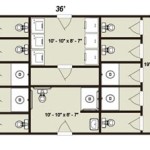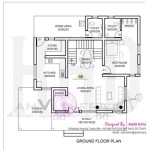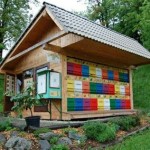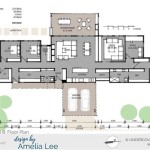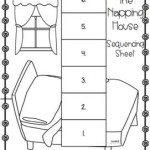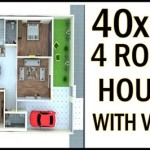Making Floor Plans 3D: A Comprehensive Guide
The transition from 2D floor plans to 3D models represents a significant advancement in architectural visualization and spatial understanding. 3D floor plans offer a richer, more immersive experience, allowing stakeholders to grasp the design concept fully. This article explores the various methods and benefits of creating 3D floor plans.
Several software options cater to the creation of 3D floor plans, ranging from professional architectural design suites to user-friendly online tools. Professional software like Autodesk Revit, ArchiCAD, and SketchUp provide robust features for detailed modeling, rendering, and animation. These programs are typically used by architects, engineers, and interior designers. They enable the creation of highly accurate and complex 3D models, incorporating building information modeling (BIM) data for a comprehensive representation of the structure.
Online tools and mobile apps offer a more accessible entry point for creating 3D floor plans. Platforms like Planner 5D, RoomSketcher, and Floorplanner provide intuitive interfaces and drag-and-drop functionality, simplifying the design process. While these tools may not offer the same level of detail as professional software, they are ideal for homeowners, real estate agents, and DIY enthusiasts looking to visualize their projects quickly and easily.
The process of creating a 3D floor plan generally involves several key steps. The first step often involves importing or drawing a 2D floor plan as a base. This 2D plan serves as the foundation for the 3D model, ensuring accurate dimensions and spatial relationships. Once the 2D plan is in place, walls are extruded to give the floor plan height, transforming it into a 3D structure. Doors, windows, and other architectural elements are then added, further enhancing the model's realism.
Furnishing and decorating the 3D model brings the space to life. Adding furniture, fixtures, and other decorative elements allows stakeholders to visualize the space's functionality and aesthetics. Experimenting with different layouts and design choices becomes significantly easier in a 3D environment, facilitating effective decision-making.
The benefits of using 3D floor plans are numerous. Enhanced visualization is a primary advantage, providing a clearer understanding of the spatial layout and design elements. This immersive experience allows clients and stakeholders to experience the space virtually, offering a more tangible representation than traditional 2D drawings. Improved communication is another key benefit, as 3D floor plans facilitate clearer communication between designers, clients, and contractors. Misinterpretations and ambiguities are minimized, leading to a smoother and more efficient project workflow.
Effective marketing and sales are also enhanced through the use of 3D floor plans. These visually appealing representations can be used in marketing materials, property listings, and presentations, captivating potential buyers and investors. The ability to virtually walk through a space significantly increases engagement and interest, ultimately boosting sales and marketing efforts.
Accurate cost estimation is another significant advantage. By incorporating BIM data into 3D models, accurate quantities of materials can be calculated, leading to more precise cost estimations. This information is crucial for budgeting and project planning, minimizing the risk of cost overruns.
Effective design iteration and modification are facilitated through the use of 3D floor plans. Changes to the design can be made quickly and easily in the 3D model, allowing for rapid prototyping and experimentation. This flexibility streamlines the design process and allows for optimal solutions to be explored efficiently.
Clash detection is another valuable feature often incorporated into professional 3D modeling software. This functionality identifies potential conflicts between building systems, such as plumbing, electrical, and HVAC, early in the design process. Identifying and resolving these clashes in the virtual environment prevents costly rework during construction.
Accessibility is a growing consideration in design, and 3D floor plans can contribute to creating more inclusive spaces. By simulating movement within the 3D model, designers can assess the accessibility of the space for individuals with mobility impairments, ensuring compliance with accessibility guidelines.
Sustainable design practices can be integrated into the 3D modeling process. Analyzing factors such as natural light, ventilation, and energy performance within the 3D model helps optimize building design for sustainability, reducing environmental impact.
Integrating virtual reality (VR) and augmented reality (AR) technologies with 3D floor plans further enhances the immersive experience. VR allows users to virtually step inside the designed space, providing a truly realistic and interactive experience. AR overlays the 3D model onto the real world, allowing users to visualize the design within the existing context.
The evolution of 3D floor plan technology continues to advance, with new features and functionalities constantly emerging. The integration of artificial intelligence and machine learning algorithms promises to further automate and optimize the design process, enhancing efficiency and creativity.

3d Floor Plans

3d Floor Plans

How Do You Make A 3d Floor Plan

How Much Do 3d House Plans Cost Faqs Answered Cedreo

3d Floor Plans Easily Communicate Your Vision Cedreo

3d Floor Plans

3d Floor Plans

What Is 3d Floor Plan How To Make It Benefits Cost

3d Floor Plans Easily Communicate Your Vision Cedreo

Make 3d Floor Plan 2d

